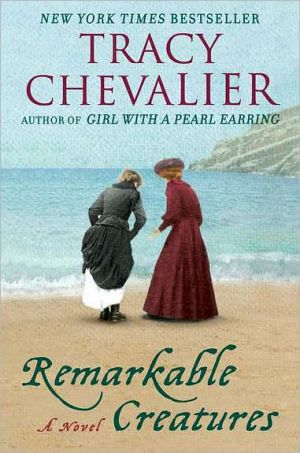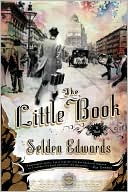Ahab's Wife: Or, The Star-Gazer
"Captain Ahab was neither my first husband nor my last." This is destined to be remembered as one of the most-recognized first sentences in literature--along with "Call me Ishmael." Sena Jeter Naslund has created an entirely new universe with a transcendent heroine at its center who will be every bit as memorable as Captain Ahab. Ahab's Wife is a novel on a grand scale that can legitimately be called a masterpiece: beautifully written, filled with humanity and wisdom, rich in historical...
Search in google:
E-Book extras: ONE: An Interview with Sena Jeter Naslund: "The Ship of My Book"; TWO: Author's Note: "The Surprise and Pleasure of It"; THREE: Reading Group Guide: Discussion Points.The famous international bestseller is now a special-features-packed e-book.Wally Lamb"Line up the literary prizes. Rendered in language both lush and luminous, Ahab's Wife is sustenance for the mind and soul."
Ahab's Wife\ Or, The Star-gazer: A Novel\ Chapter One\ Captain Ahab was neither my first husband nor my last. Yet, looking up—into the clouds—I conjure him there: his gray-white hair; his gathered brow; and the zaggy mark; I saw it when lying with him by candlelight and, also, taking our bliss on the sunny moor among curly-cup gumweed and lamb's ear. I see a zaggy shadow in the rifting clouds. That mark started like lightning at Ahab's temple and ran not all the way to his heel (as some thought) but ended at Ahab's heart.\ That pull of cloud—tapered and blunt at one end and frayed at the other—seems the cottony representation of his ivory leg. But I will not see him all dismembered and scattered in heaven's blue—that would be no kind, reconstructive vision; no, intact, lofty and sailing, though his shape is changeable. Yesterday, when I tilted my face to the sky, I imaged not the full figure but only his cloudy head, a portrait, glancing back at me over his shoulder.\ What weather is in Ahab's face?\ For me, now, as it ever was in life, at least when he was looking at me alone and had no other person in view, his visage is mild—with a brightness in it, even be it a wild, white, blown-about brightness. Now, as I look at those billowed clouds, I see the Pequod. I half-raise my hand to bid good-bye, as it was that last day from the east-most edge of Nantucket Island, when, with a wave and then a steadfast, longing look, till the sails were only a white dot, and then a blankness of ocean—then—a glitter— I wished his ship and him Godspeed.\ Nantucket! The home where first I found my body, my feetnot so much being pulled into this sandy beach as seeking downward, toes better than roots; then, my mind, built not to chart this blue swell of heaving ocean, but the night sky, where the stars themselves, I do believe, heave and float and spin in fiery passions of their own; Nantucket!—home, finally, of my soul, found on a platform eight-by-eight, the wooden widow's walk perched like a pulpit atop my house. These three gears of myself—body, mind, and soul—mesh here on this small island—Nantucket! Then, why, when I look into the mild, day sky, do the clouds scramble, like letters in the alphabet, and spell not Nantucket, but that first home, Kentucky? And those clouds that did bulge with the image of Ahab show me the map of that state, flat across the bottom and all billowed at the top? I did not consult Ahab about my decision to spend my pregnancy in a rough Kentucky cabin with my mother, instead of staying in the gracious home of a captain's wife on Nantucket. But I wrote him, of course, and sent the letter after him on the ship called the Dove, so he could imagine me aright. That time spent with my mother outdoors in the sweet summer and golden Kentucky autumn was augmented by our indoor companionship of sewing baby smocks and cooking and reading again those great works of literature my mother had brought with her to the wilderness, green-bound books I had read as a child or she had read to me.\ Sometimes my mother and I stood and looked at our faces together in the oval mirror she had brought with her from the East. Along with her library chest of books, the mirror with its many-stepped molding distinguished our frontier cabin from others. Thus, elegantly framed, my mother and I made a double portrait of ourselves for memory, by looking in the mirror.\ When in early December the labor began but tried in vain to progress, my mother went from our cabin, driving the old mare in the black buggy through a six-inch crust of snow, for the doctor. In my travail, I scarcely noticed her leaving. When my mother did not come home and did not come home, and the pains were near unbearable and the chill was creeping across the cabin floor and into my feet as I paced, I grasped the feather bed from my bunk and flung it atop her bed. In desperation, between spasms, I gathered all the gaudy quilts in the house, and then leaving the latchstring out so that I would not have to venture from my nest when she returned, I took to my childbirth bed. There, softness of two mattresses comforted me from beneath and warmth of myriad quilts, a cacophony of colors, warmed me from above, but still I worked my feet and legs and twisted my back.\ Despite the heat of my labor, I could feel my nose turning to ice, long and sharp as a church steeple all glazed with frost. Parsnip! I thought of; frozen and funny—a vegetable on my face! I chortled and then prayed, wondering if prayer and laughter gurgled up, sometime, from the same spring. Let nose be parsnip, parsnip be steeple, steeple be nose-whatever that protuberance, it is frozen to the very cartilage. Warm it! Save me, gods and saints! Wild and crazed by pain, my thoughts leaped about in antic dance, circling one picture after another. Nose! Steeple! Parsnip! My desperate, laughing prayer from within that quilted hump below its parsnip was only that I should be delivered and nothing at all for the welfare of the rest of the world. I wanted to wait for my mother's return and I was afraid because I had little idea of how to catch the baby. So even as I prayed, I prayed against myself, that time would not pass nor take me any closer to the port of motherhood. I thought of Ahab, as if his ship were wallowing, going neither forward nor drifting back but immobile in a confused sea.\ Copyright © 1999 Sena Jeter Naslund\ Ahab's Wife\ Or, The Star-gazer: A Novel. Copyright © by Sena Naslund. Reprinted by permission of HarperCollins Publishers, Inc. All rights reserved. Available now wherever books are sold.
\ From Barnes & NobleCall Me Una... \ In her new novel, Ahab's Wife, Sena Jeter Naslund takes perhaps the least eligible bachelor in all of American literature and makes his marriage and pillow talk the very stuff of her book. It is a tall order she sets for herself, and one that she does not fail in filling. There's no mistaking Naslund's Ahab for Melville's Ahab, but her captain has his own, less imposing charms to offer. The real focus, of course, is on the title character, the wonderfully wrought Una Spenser, Ahab's wife, in whose labyrinthine adventures of the heart Ahab's hand is but a single lovely room.\ Naslund is no stranger to the challenges of a novel based on the reimagining of a literary figure. Her novel Sherlock in Love begins with Watson's decision to write a biography of his old friend. After putting an advertisement in the paper for information about Sherlock Holmes, Watson discovers many details of the famous detective's life that Sir Arthur Conan Doyle never had the time to mention. Ahab's Wife is a decidedly more ambitious project, for who is the archetypal forbidding patriarch in our literature but Ahab? And yet Naslund's attempt to show us another side of his life is wholly believable and deeply moving.\ The novel begins with Una Spenser delivering Ahab's first child in a rural cabin in Kentucky, while the captain is at sea. The baby dies, as does Una's mother, who has gone to find a doctor. She explains her reasons for starting her narrative there: "I needed to tell those terrible things first, to pass through the Scylla and Charybdis early in my voyage of telling; otherwise, I feared I would turn back, be unable to complete my story, if those terrors loomed ahead." Safely past, she returns to her childhood and begins her story there. After a terrible fight with her Methodist zealot father, Una is sent to live with her aunt and uncle, who are lighthouse keepers near Rhode Island. It is there that Una first discovers her love of the sea. The love is not immediate. Upon first glance at the sea, Una says with contempt, "It's not wild enough." But when two handsome sailors, Giles Bonebright and Kit Sparrow, arrive from New Bedford, Una becomes enraptured, first with them, and then with the ocean they speak of so reverently.\ By now Una's mother has become pregnant with her second child, and mother and daughter have plans to meet in New Bedford. Una waits for her mother at the Sea-Fancy Inn, which is across the street from the Spouter Inn, which readers will remember from Chapter Three of Moby-Dick. When Una's mother sends a letter explaining that she has miscarried and will return home to recuperate, Una is devastated. She cuts off her hair, buys an outfit of boy's clothing, and runs down to the wharf to find a ship that will take her as cabin boy. With her eyes well trained from days spent in the lighthouse, she proves her worth as a lookout aboard the Sussex. Her first time at the top of a mast occasions a Melvillian description: "Up and up! How to tell you about it? You have looked from the edge of a cliff? Climbed your own trees? Those efforts suggest a whiff of rigging-climbing -- as the volatile oil from an orange peel suggests the full flavor of its ecstatic juice." Naslund has drunk deep from the well of Melville's prose in preparation for this novel, and this shines though in her rich, extravagant language.\ Here begins the heart of the novel -- Una's adventures at sea. It is here that she comes of age and here that she meets Captain Ahab. Many other characters from Melville's novel appear. Tashtego and Daggoo are found jumping from their unsuccessful whaler to join on to the Pequod as she pulls into port. We find Pip nearly burned to death in a house fire, then rejecting the Nantucket school for a chance to go to sea with Ahab. Even Ishmael himself appears, asserting that his name is David Pollack, but "Call me Ishmael."\ Naslund uses these references to the events in Moby-Dick in interesting ways. When Ahab leaves Una behind as he sets out for another two-year voyage on the Pequod, we know that this is to be his final trip because Una sees Ishmael and Queequeg board the ship at the last minute. Using our knowledge of this outcome, Naslund turns Una's sighting of the two sailors into a dark portent. In this and many other ways, Naslund's novel successfully weaves itself into the margins of Melville's. The tremendous sacrifice made by whaling families -- of men who leave their families for two or three years at a time, return for no more than three or four months, and then set out again -- is rendered more vividly in Naslund's book. Never in Moby-Dick do we feel the numb outrage of those short, insufficient visits between voyages as we feel it in Ahab's Wife, after the Pequod departs, and Una walks homeward, reviewing all the things she hasn't told her husband.\ Una's suffering is the blood of this wonderfully written novel. As she gropes and strides (and writes, for the novel is her memoir) her way through the numerous tragedies that befall her (Ahab's death is only the beginning), her determination to cherish her pockmarked life is as moving as it is vast. And for those who make it to the end of this 666-page masterpiece, the novel's conclusion holds a clever surprise.\ —Jacob Silverstein\ \ \ \ \ \ Wally LambAhab's Wife is sustenance for the mind and the soul. \ — Book\ \ \ Bret LottThis is a great American novel. \ — Book\ \ \ \ \ NewsdayThis is truly a grand. . . adventure story whose heroine survives on her intellect and courage. .\ \ \ \ \ Louise ErdrichAn intense treat, powerfully written, Ahab's Wife is one of the best contemporary novels I have read in years.\ \ \ \ \ Los Angeles TimesBeautifully written. Lyrical...alluring and wise.\ \ \ \ \ Los Angeles TimesBeautifully written. Lyrical. . . alluring and wise. .\ \ \ \ \ Gail Godwin"Ahab's Wife is a worthy female companion to Moby-Dick and a tour de force in its own right."\ \ \ \ \ Laurie Robertson-Lorant"Based on 19th century sources and peopled with a rich array of fictional, mythic and historical characters, this ambitious novel is a kind of technicolor dream quilt that turns Moby-Dick inside out and stitches it back together.... Harrowing, poignant and comical by turns, Ahab's Wife is an audacious romp through mid-19th century New England history that is amply informed by both scholarship and imagination... A spanking good read."\ \ \ \ \ Wally Lamb"Line up the literary prizes. Rendered in language both lush and luminous, Ahab's Wife is sustenance for the mind and soul."\ \ \ \ \ Brett Lott"Ahab's Wife is an epic tour de force, and deserves its rightful place next to Melville's classic. Ambitious, powerful, heartbreaking, and transcendent at once, Una Spenser's tale of a life fully lived gives us what we crave: a compelling story beautifully told. This is a great American novel."\ \ \ \ \ Publishers Weekly"Captain Ahab was neither my first husband nor my last," says Una Spenser, the eponymous narrator, in the first sentence of this deliciously old-fashioned bildungsroman, adventure story and romance. Naslund's inspiration, based on one reference in Moby-Dick, may not satisfy aficonados of Melville's dense, richly symbolic masterpiece, but it should please most other readers with its suspenseful, affecting, historically accurate and seductive narrative. At age 12, Una escapes her religiously obsessed father in rural Kentucky to live with relatives in a lighthouse off New Bedford, Mass. When she is 16--disguised as a boy--she runs off to sea aboard a whaler, which sinks after being rammed by its quarry. Una and two young men who love her are the only survivors of a group set adrift in an open boat, but the dark secret of their cannibalism will leave its mark. Rescued, Una is wed to one of the young men by the captain of the Pequod, handsome, commanding Ahab, who has not as yet met the white whale that will be his destiny. These events--recounted in stately prose nicely dotted with literary allusions--take the reader only through the first quarter of the book. Una's later marriage to Ahab--a passionate and intellectually satisfying relationship--the loss of her mother and her newborn son in one night, and her life as a rich woman in Nantucket are further developments in a plot teeming with arresting events and provocative ideas. Una is an enchanting protagonist: intellectually curious, sensitive, imaginative and kind. But Naslund also endows her with restlessness, rash impetuosity and a refreshing skepticism about traditional religion, qualities that humanize what verges on an idealized personality, and that motivate Una's search for spiritual sustenance. Unitarianism and Universalism are two of the religions she investigates; other "dark issues of our time" include slavery, and the position of women. Social and cultural details texture the lengthy, episodic, discursive narrative. Una's search for identity brings her friendship with such real life figures as writer Margaret Fuller and astronomer Maria Mitchell, and with such colorful fictional characters as an escaped slave and a dwarf bounty hunter. Even Halley's Comet makes an appearance. Provocatively, Naslund (The Disobedience of Water) suggests a new source of Ahab's demented rage to kill the whale who has "unmasted" him. Some elements of the novel jar, especially Naslund's tendency to pay rhapsodic tributes to Una's questing spirit; a surfeit of noble, large-souled and amazingly generous characters; and the symmetrical neatness of the plot. In the last third of the book, readers may become weary of Una's spiritual reflections and the minutiae of her daily routine. But these are small faults in a splendid novel that amply fulfills its ambitious purpose offering a sweeping, yet intimate picture of a remarkable woman who both typifies and transcends her times. Illustrations by Christopher Wormell. 150,000 first printing; $150,000 ad/promo; 20-city author tour; BOMC main selection; Simon & Schuster audio. (Oct.) Copyright 1999 Cahners Business Information.\ \ \ \ \ Library JournalAt age 12, Una a nonconformist, is sent from Kentucky to Nantucket because she refuses to believe in Christianity. At age 16 she runs away to sea, posing as a cabin boy aboard a whaler. She enjoys her adventure until the first whale is killed and processed, and then one day her ship is rammed by one of them. After weeks in a lifeboat, she is rescued and taken back to Nantucket aboard the Pequod with Captain Ahab. Una and Ahab find they have much in common, from their passionate tempers to their stubborn tenacity, so they marry and have a son. When Ahab returns to sea, he becomes obsessed with the white whale, Moby Dick. News comes back that the Pequod sank, leaving a single survivor called Ishmael. When Una meets him, her life begins again. Masterfully read by Maryann Plunkett and beautifully written, this tale gives another possible perspective on the dour Captain Ahab and his family. Recommended.--Joanna M. Burkhardt, Univ. of Rhode Island, Coll. of Continuing Education Lib., Providence Copyright 2000 Cahners Business Information.\\\ \ \ \ \ Ron CharlesUndulating between adventure and contemplation, Ahab's Wife is a tour de force, a wild voyage through the 19th century and the American canon. That old whale has finally met his match. \ — The Christian Science Monitor\ \ \ \ \ Ben GreenmanAhab's Wife is not only a fine feminist complement to Melville's epic but an epic in it's own right.\ — Time Out: New York\ \ \ \ \ Kirkus ReviewsNothing in Naslund's previous fiction (The Disobedience of Water, p. 571, etc.) prepares us for this extraordinary tale: a ravishingly detailed re-creation of the worlds of 19th-century antebellum America and of Melville's seminal Moby Dick. The protagonist, and primary narrator, is Una Spenser (whose bookish mother named her after the heroine of The Faerie Queene), whom we first meet in her native Kentucky, where she's returned to give birth to her first child—sired by her second husband: middle-aged Ahab, captain of the whaling ship Pequod. Naslund's flexible and fascinating narrative then leaps from Una's ordeal (both her baby and her beloved mother die) and an inspiring new friendship—backward, to the story of her upbringing among relatives who tend a New England lighthouse, apprenticeship at sea disguised as a cabin boy, conflicted first marriage to an increasingly deranged husband, and eventual union with the brooding Ahab, whom even his young wife's resourceful love cannot deflect him from his vengeful pursuit of the white whale he imagines Evil Incarnate. Then Una returns to Kentucky, thence back east (Nantucket), where her restless intellect involves her with New England's ruling intellectual elite (including Transcendentalist icon Margaret Fuller) and the burgeoning abolitionist movement. The climactic pages, concentrated on Ahab's increasing monomania and Una's realization that he's lost to her, vibrate with tragic intensity. And the long meditative denouement, alive with echoes of Melville's cadences, memorably depicts Una's gradual fulfillment in a society poised on the cusp of civil war, her being saved by living testimony of (her surviving son, Justice)and by her gratifying, if belated, relationship with the Pequod's sole survivor) to the power of love and service to others, both neutralizing the fury that had consumed the doomed Ahab. Excepting a few inconsequential false steps, a genuine epic of America: an inspired homage to one of our greatest writers that brilliantly reinterprets, and in many ways rivals, his masterpiece. (First printing of 150,000; Book-of-the-Month main selection; $150,000 ad/promo; author tour)\ \








